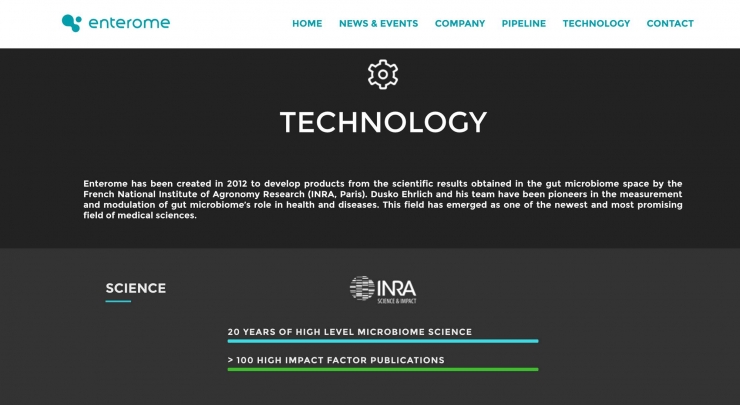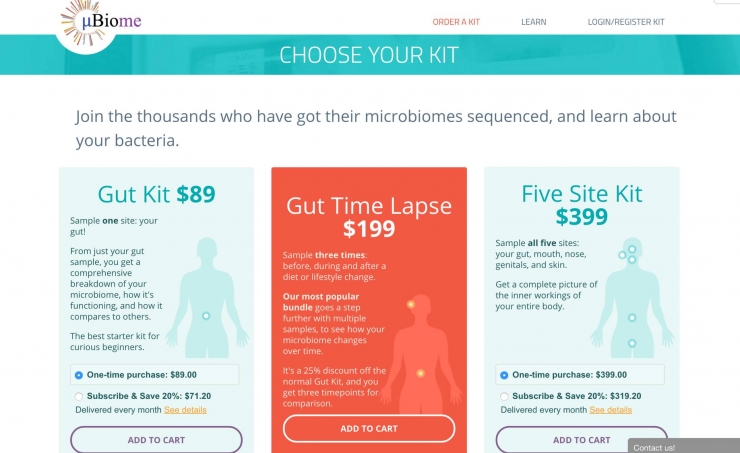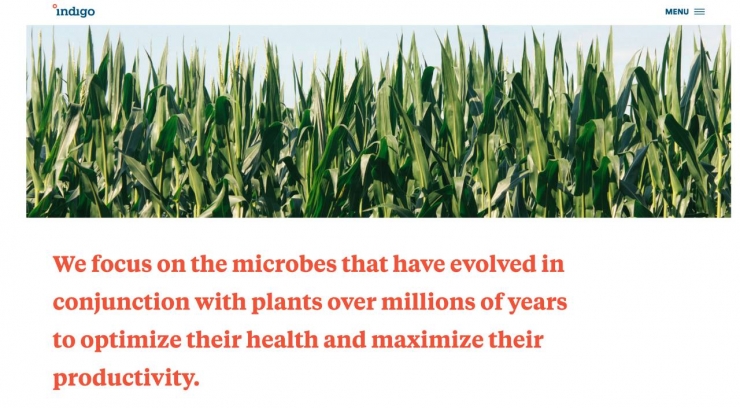Lei Feng network press: This article was published by DeeperBlue Lei Feng network.

Experiments show that instead of trying to lose weight, it is better to “eat oystersâ€.
In 2009, Zhao Liping, an academician of the American Academy of Microbiology and a professor at Shanghai Jiaotong University, demonstrated that obesity is positively related to the reduction of Bifidobacteria and the increase of sulfate-reducing bacteria through microbial genome sequencing technology. In order to change the gut microflora of the fat man, the Massachusetts General Hospital of Massachusetts developed a "flavoured" technique: making thin man's feces into diet pills. This technology, called " swamp transfer ", has become one of the three pillars of the microbiome industry (microbial genome testing, microecological drugs, and fecal bacteria transplantation technology).
It sounds a bit difficult to swallow, but the academic community recognizes that there are currently 614 relevant articles on SCI.
There are thousands of microbes and trillions of microbial cells in our intestines. How do you know which microbe can help you lose weight? Which microbes can make people fat?

There are thousands of microorganisms such as Bifidobacterium, Escherichia coli, Eubacteria, and Bacteroides in the intestine.
This requires the use of microbial genome sequencing and analysis. In a nutshell, genes are sequenced and then put into a database for comparison, and then the types of microorganisms are analyzed, which are beneficial, which are harmful, and even their respective functions.
In May 2016, the Obama administration launched the National Microbiological Group Project (NMI) with a start-up capital of more than US$500 million. There are 8 human organisms group plans and 9 environmental microorganism group plans internationally. Humans invest billions of dollars trying to accurately map the genetic information of more than 100,000 species of microbes using gene sequencing.
Why are the genes of microorganisms so valued?At present, the human and animal genomes have been sequenced and the database is complete. The microbial genome sequencing was ten years later than the previous two.
Once the unknown domain of microbiome sequencing has been explored, it can promote the development of the following three areas:

1. Microorganisms can be used for clinical diagnosis and treatment.
For example, if we want to avoid colonoscopy, we can use feces as a sample to detect the intestinal microbiota and find out the maladjusted microorganisms. We can compare the distribution of known microflora with known conditions to diagnose the disease. And then develop drugs to activate or inhibit dysregulated microorganisms.
The human body carries 1,000 trillion microbial cells and the total weight adds up to more than 1 kilogram. Microbes and the human body are mutually beneficial and affect each other's health. Scientific research has confirmed that there is a direct relationship between intestinal dysbacteriosis and obesity, diabetes, and mental illness.
2. Microorganisms can be used in the health products industry.
For example, some yogurts can benefit from the beneficial effects of probiotics and prebiotics on the intestinal tract. Different strains, different strains and ratios can produce different effects, according to the intestinal flora of each group, targeted development of probiotic products, but also the results of gut microbiota sequencing can be used to evaluate the conditioning effect of health products.
3. Microbes can be applied to agriculture.
Microbial nutrients can accurately customize the microbial feed required for different crops, which can significantly increase agricultural output.

The picture shows Burkina Faso, Africa's largest cotton base, Chairman Christian Kabore said in an interview that cotton production is already insufficient.
In 1995, life scientist Fleichman completed the genome-wide determination of Haemophilus influenzae and the study of microbial gene sequencing started.
In 2016, microbial gene sequencing is ready for widespread application. Why do you say that?First, gene sequencing technology has undergone three generations of innovations. Third-generation sequencing technology has shortened time and reduced costs, making it possible to sequence large-scale microbial groups . For the whole genome of a microorganism, the first-generation sequencing technology requires 100 instruments, several years, hundreds of thousands of dollars to complete the test. Now an instrument, ten minutes, thousands of dollars can be measured.
Second, the database of microbial genes is getting bigger and more accurate.
In 2007, the U.S. launched the "Human Microbiome Project" for the sequencing of 900 microbial groups and is currently near completion. As of 2015, the full-genome sequence of 4,517 bacteria, 3,926 viruses, and 272 archaea has been included in the public database of the National Center for Biotechnology Information (NCBI).
Third, the application of cloud computing and machine learning in biology has begun to spread.
Microorganisms have a huge amount of information. If the NCBI's microbiome data is stored on DVD (average 700 MB), these DVDs will have four world's tallest buildings, Burj Khalifa. The emergence of cloud computing can break through the high demands of local storage on hardware.
The genetic information of microbial genes is complex. Even the latest sequencing technologies cannot overcome the large and incomplete bottleneck of sequencing results. With these fragmentations, there is a problem with incorrect microbiological information that is better than the information in the database. The development of machine learning algorithms can effectively and quickly analyze data.
In Europe and the United States, "microbiome sequencing" is moving from the laboratory to the market. In China, the microbiome sequencing service is only aimed at scientific research, and providers such as BGI, Nuozhiyuan, Meiji Bio, etc. At present, the microbial genome sequencing commercial application blank, people are looking forward to the birth of a new industry.
At present, most of the companies that sequence microbial groups for commercial use are in the initial stage , mainly in France and the United States. Applied to medical diagnosis, agriculture and health food in three areas. Dark Blue selected three relatively mature startup companies and selected the following: Corresponding market demand points, technical reliability, and founder background.
1. Enterome Biosicence
The founding team is expected to cure Crohn's disease, which is known as the "number one strange disease" of the Department of Gastroenterology, by studying the development of drugs in the genome of the intestinal flora. This is an inflammatory disease of the intestinal tract with unknown causes, recurrent attacks, and incurable diseases. The team found that the main cause of the disease was the excessive adhesion of invasive E. coli (AIEC), causing intestinal mucosal lesions. This drug that can effectively inhibit the proliferation of E. coli is in the human clinical trial stage.

Enterome Bioscience's official website features many years of experience in the research of microbial genome technology.
Founded in Paris in 2012, Enterome Bioscience opened a branch in Kendall Square, the Silicon Valley biotechnology startup Silicon Valley in May this year. Kendall Square is close to Harvard and MIT and is the world's major biotechnology R&D center. The company obtained two rounds of financing totaling 17.5 million euros, including investors such as Seventure Partners, a global leader in microbial investment, and Nestlé.
Company highlights:
1. There are approximately 1 million Crohn's patients in Europe and America, of which 50% of moderately severe patients require long-term treatment. However, the use of immunosuppressants and surgical treatments is only a temporary solution. It is estimated that there will be 600,000 moderately severe patients in 2020, which means a market of 5.6 billion US dollars.
2. Founder Dusko Ehrlich is Director of Research at the French National Institute of Agriculture (INRA) and has led the development of the INRA metagenomics platform. Erelich has published more than 350 articles in scientific journals. He has participated in several international microbiological group projects. The remaining two core figures have more than 15 years of experience in microbiological research.
3. Enterome received technical and financial support from the French National Institute of Agriculture (INRA) and has more than 20 years of research and development history. It is a pioneer in the application of microbial groups.
4. The Enterome genome database is complete and contains the entire genome of all fecal microorganisms.
5. The company's partners include Johnson & Johnson Pharmaceuticals, Mayo Clinic, Apovi of drug development companies, Takeda Pharmaceutical Industry Co., Ltd. and others. Enterome uses its proprietary complete genome database to work with these companies to develop microbial-related diseases such as Crohn's disease and dyskinesia.
2. uBiome
This company can sequence the colonies in your mouth or intestines. A sampling package of $89, the sample is sent back to uBiome by the user and the report is received after 4-6 weeks. The report includes not only the distribution of intestinal colonies, but also the results of your comparison with healthy people, vegans, obese people, and alcoholics. After multiple tests, the distribution of colonies at different times can also be compared.

uBiome website interface, display single or multiple measurement package products, independent testing, user-friendly.
In 2013, uBiome, the world's first commercial company to open up the microbios sequencing to the public , was initially funded by the public and attracted a total of $350,000 in support from 2,500 participants. In 2014, uBiome received 1.5 million seed rounds and A rounds of US$4.5 million in financing, and successfully selected Y Combinator and 500 Startups founded by PayPal/Google.
Company highlights:
1. uBiome mainly provides personal basic sequencing services, utilizes cloud service storage and machine learning, and finally organizes the analysis results into vivid and intuitive reports that users can easily understand.
2. The sources of microorganisms that can be analyzed are extensive. The company can analyze not only colonies in the mouth and intestines, but also colonies of the nose, skin, and genitals. In addition to the human body, uBiome has analyzed tumor biopsy samples, swine faeces, microbes in seawater, and more.
3. Open multi-party cooperation and establish a business ecosystem . uBiome provides microbial gene sequencing services for prebiotics company ISOThrive. At the same time, uBiome collaborated with the US Centers for Disease Control and Prevention to perform sequencing analysis on at least 10,000 patient stool samples and expand the database. In addition, uBiome has also moved into the medical field and has collaborated with clinicians of the medical institution OpenBiome to study the technology for the transfer of fecal bacteria.
2. Indigo
Indigo just released its first product, Indigo Cotton, in July this year. This 100% eco-friendly product, through microbiome sequencing, increased cotton production in dry regions by 10%. However, the output of modern agriculture has only grown by 1% annually.

Indigo official website interface. Indigo uses micro-organisms to increase crop yields. Compared to chemical methods such as chemical fertilization, it can save water without damaging crops. It is 100% environmentally sustainable.
The U.S. company was founded in 2014. The first round of investment received 56 million U.S. dollars, and this year it received another 100 million U.S. dollars worth of investment. This is the largest amount of financing that the agricultural standard has ever received.
Company highlights:
1. Indigo's products can not only increase crop yields, cater to the needs of the trillion-level agricultural market, but also address global water shortages . Agricultural water resources account for 70% of global water use. On the basis of protecting the environment, Indigo's low-water-use and high-yield crops treated with beneficial microorganisms may completely change the status of agriculture.
2. The company collects fees only when there is a quantifiable increase in crop output. This model can encourage customers to purchase . The second product, Indigo Wheat, will be launched at the end of this year, and will continue to increase the water use efficiency of wheat in large dry regions of the United States.
3. The company’s CEO has created 3 companies in the past 18 years, two of which have been successfully listed and raised more than US$750 million; the third company is developing a small molecule biopharmaceutical, which was Pfizer’s 5.2 billion this year. Dollar acquisition.
4. Roger, Chief Scientific Officer, is an expert in agriculture, and the first director of the National Institute of Food and Agriculture, which was appointed by Obama in 2009-2011. He is also currently Director of the World Food Center at the University of California, Honorary President of the Donald Danforth Center for Plant Science.
5. Indigo used a microbios sequencing technology and bioinformatics calculations to create a key microbiome information database that uses machine learning to predict microorganisms that are most beneficial to crop growth. Applying these microorganisms to crops will help protect crops from pests and diseases, increase nutrient intake and water use efficiency, and ultimately increase production.
6. The company's research team has about 60 people and has performed genome-wide sequencing of 40,000 microorganisms. The company has also conducted year-round testing on a dozen crops on three continents.
Lei Feng Network Note: This article for deeperblue authorized Lei Feng network (search "Lei Feng network" public number concerned) release, reproduced can contact WeChat. Do not delete content.
Distribution Transformer,Electric Oil Type Distribution Transformer,Oil Type Distribution Transformer,Oil-Immersed Special Transformer
Shaoxing AnFu Energy Equipment Co.Ltd , https://www.sxanfu.com